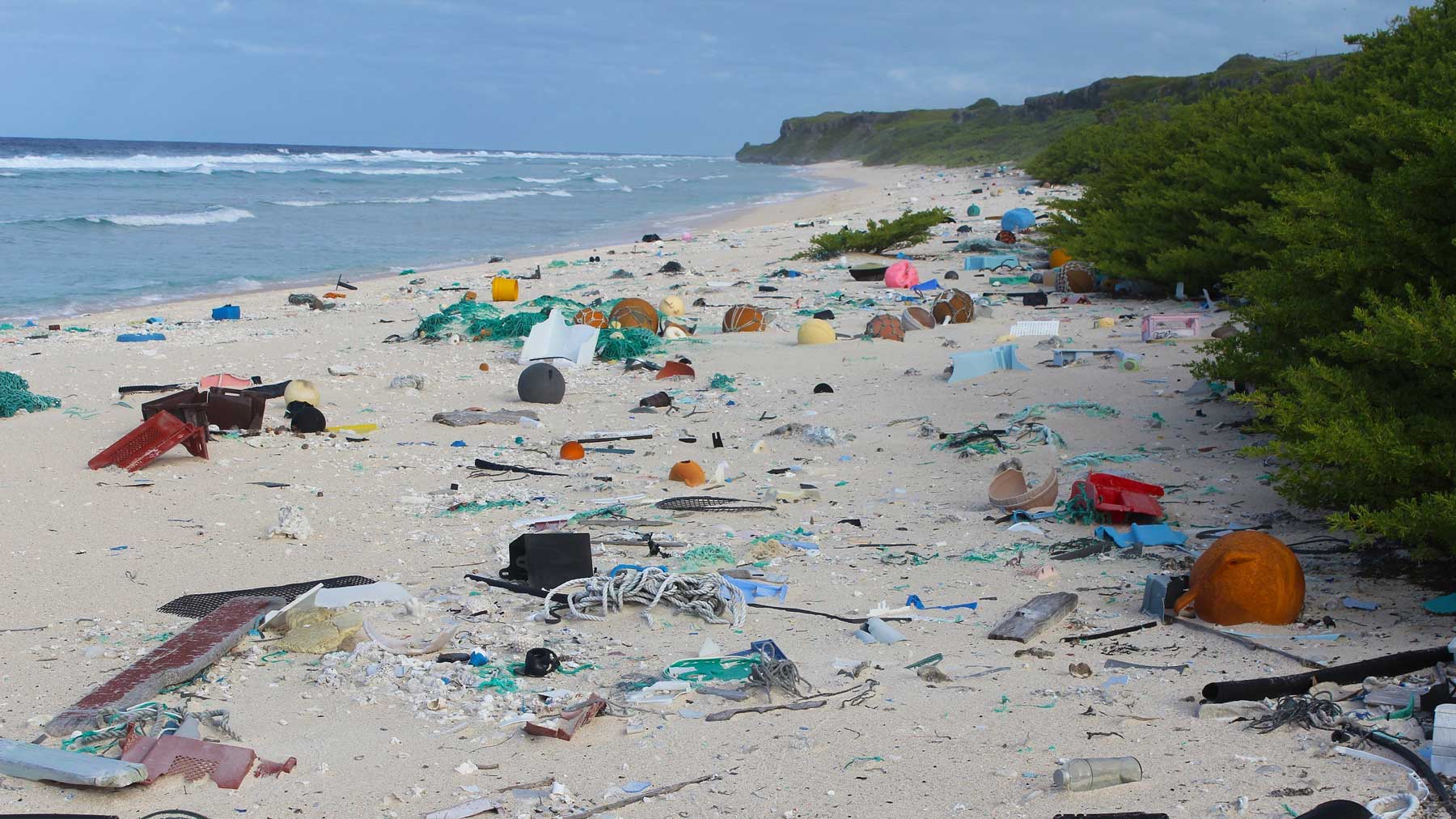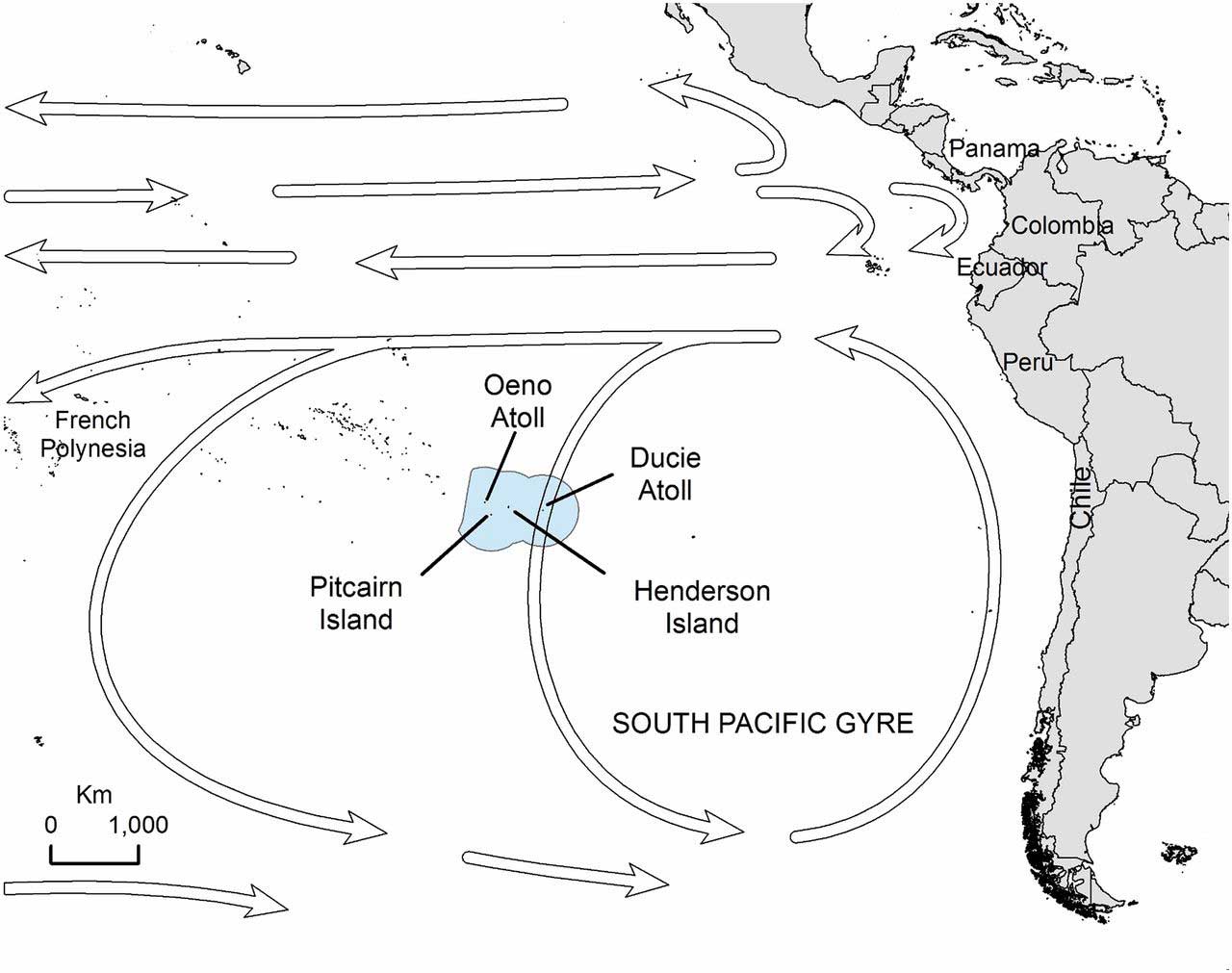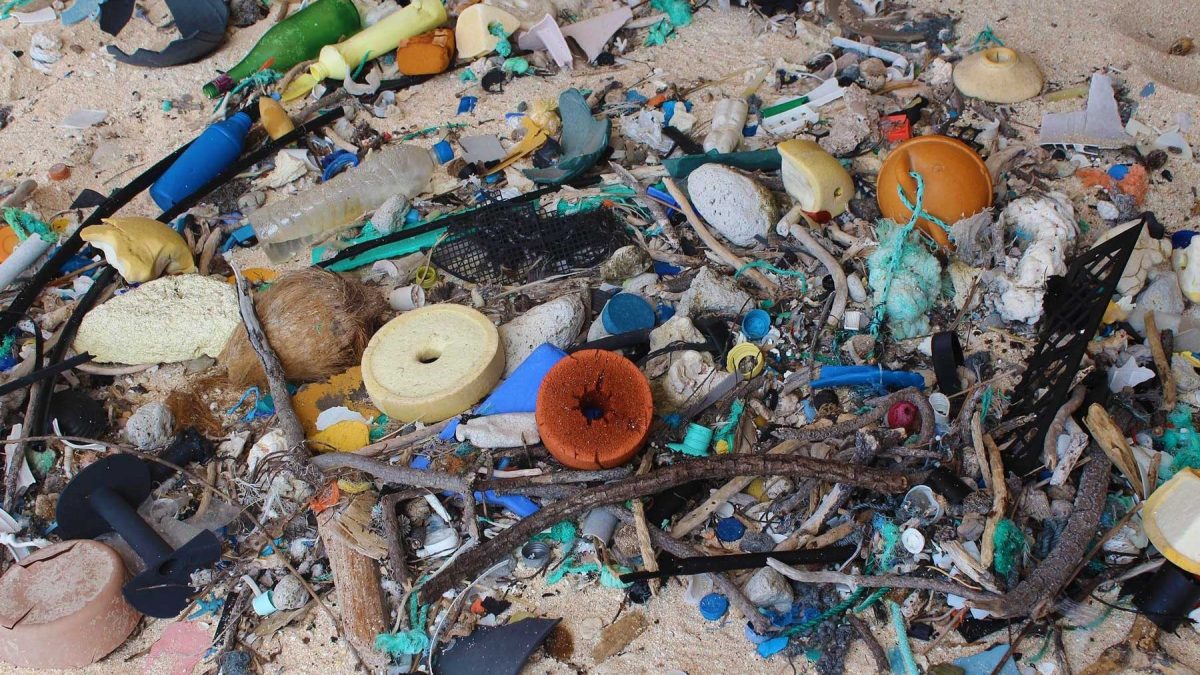More than 37 million plastic parts have washed up on an isolated island in the Pacific—despite its thousands of miles from any city.
Turtles, hermit crabs, and other wildlife on Henderson Island are struggling to thrive in what researchers believe is now the highest density of plastic debris on the planet.
Their findings were published Monday in the Proceedings of the National Academy of Sciences.
Scientists only set foot on Henderson island once every five years, but a steady stream of trash is being delivered to the isolated landmass courtesy of strong ocean currents. The garbage is accumulated detritus, believed to come from around the world, swept into drain pipes or washed off boats.

For a 3,100-mile-radius, there are no major towns or factories. The garbage stream travels a vast distance before arriving at Henderson Island.
To date, 17 tons of trash have collected on the beaches. With thousands of pieces arriving daily, the growing rate is “exceptional” and a “shocking but typical example of how plastic debris is affecting the environment on a global scale,” University of Tasmania researchers say.

This article was featured in the InsideHook newsletter. Sign up now.
























